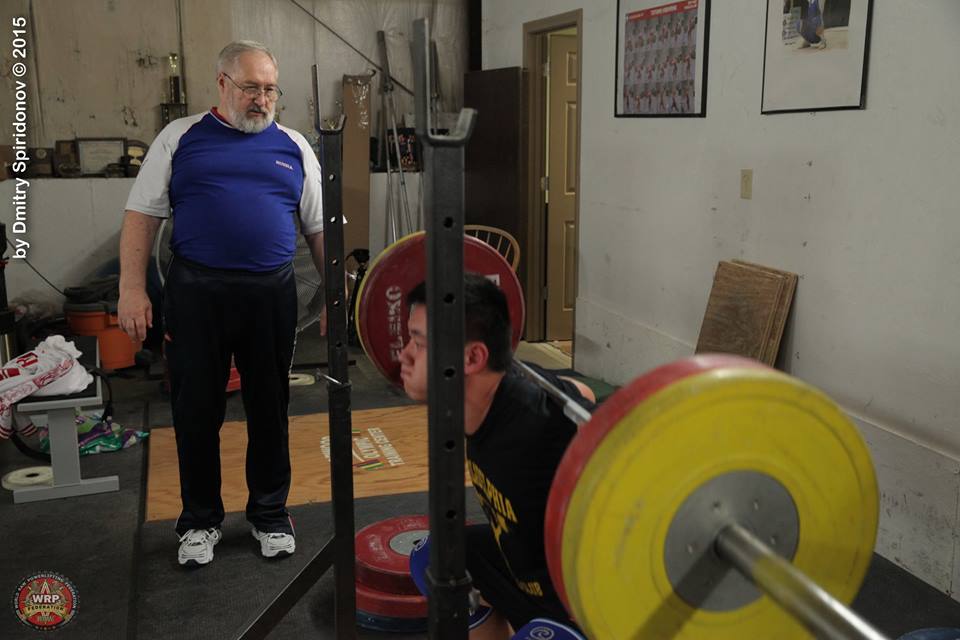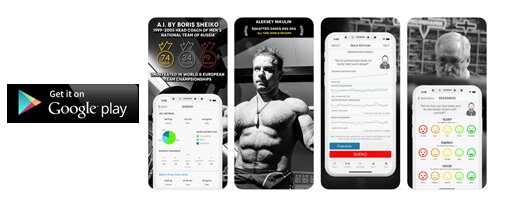
Coach Sheiko’s Gym Rules
Taken from Yasha Kahn’s article “Rules of a Weightlifting Gym” www.yashathoughts.com
Boris Sheiko is the first coach whose rules I’d like to share. I will write about what other coaches said in future posts.
I’ve mentioned Sheiko in past posts. He was the head coach of the Kazakhstan Junior and School Age Weightlifting team, and is the most decorated powerlifting coach of all time. Sheiko has developed 39 world champions. There’s no denying that his process works. Below are the rules that he has set up at his gym in Ufa, Russia:
- Greet everyone when entering the gym.
- Athletes are only allowed to train by my plan. Those who choose not to train by my plan can go train at another gym.
- Weights above 80% may only be lifted under my supervision. An athlete must warn me if he is loading 85% or 90% onto the bar so I can observe the lift.

Coach Sheiko keeping a close eye on his lifter.
- If an athlete approaches 90% or higher, the entire gym must watch and give their support.
- If a lift is done with ease, I can increase the weight above what’s planned. If the athlete doesn’t handle that weight, the weight is reduced and the athlete should continue the reps and sets that were planned originally.
- If an athlete asks for my permission to lift more than what’s planned, I allow it but warn him that if he doesn’t lift it, he’ll be given a penalty of 2 sets. For example, let’s say the plan is to lift 4 sets of 2 at 85%. If after the first set, the athlete says, “it’s light, I want to add 5kg,” I allow it with the agreement that he lifts it for the remaining 3 sets as written in the plan. If unsuccessful for a single set, he must go down to the planned 85%, and do the remaining 3 sets plus 2 additional penalty sets. However, if the athlete is successful with the heavier weight for the remaining sets, he is crowned “best weightlifter of the gym” for the day.
- If an athlete performs an exercise with incorrect technique, for instance not squatting to or below parallel, the set is not counted.
- During the final training session before a competition, I discuss with the athlete what weight he will open with at the competition. Together we write the warm up weights, sets, and reps.
- During competitions I don’t allow my athletes to look at the protocol (lifts others have done or will attempt). Tactics are the job of the coach. I assign the weights, the athlete lifts them. I watch all of the competitors and psychologically prepare my lifter for the deciding, winning attempts.
- When a workout is complete, athletes must clean the area where they were training.
- Steroids may never be used or discussed in my gym.
- When an athlete is leaving the gym, they must say goodbye to everyone.* Coach Sheiko later added that there were additional unwritten rules which are simply part of the weightlifting culture in general. These include rules for safety, respect for each other, the coach, the gym, and the equipment.
These rules are for Sheiko’s gym. His goal is to develop great athletes, and his rules are designed with that concrete purpose in mind. Most gyms I’ve been to don’t have rules designed for developing successful athletes. At the same time, most gyms don’t repeatedly produce champions, nor is that their goal. Gold’s Gym wouldn’t need to follow these, neither would most standard fitness gyms.
The above rules enforce team comradery, discipline, cleanliness and safety, and most importantly, they push athletes to succeed.
I never thought that weightlifting gym rules were important or interesting. However, seeing that successful coaches have designed rules that aid them in their goals, my thoughts on this have changed. Does your gym have rules that help develop a strong team and successful athletes? If not, would you consider designing rules around the goals of your gym?



